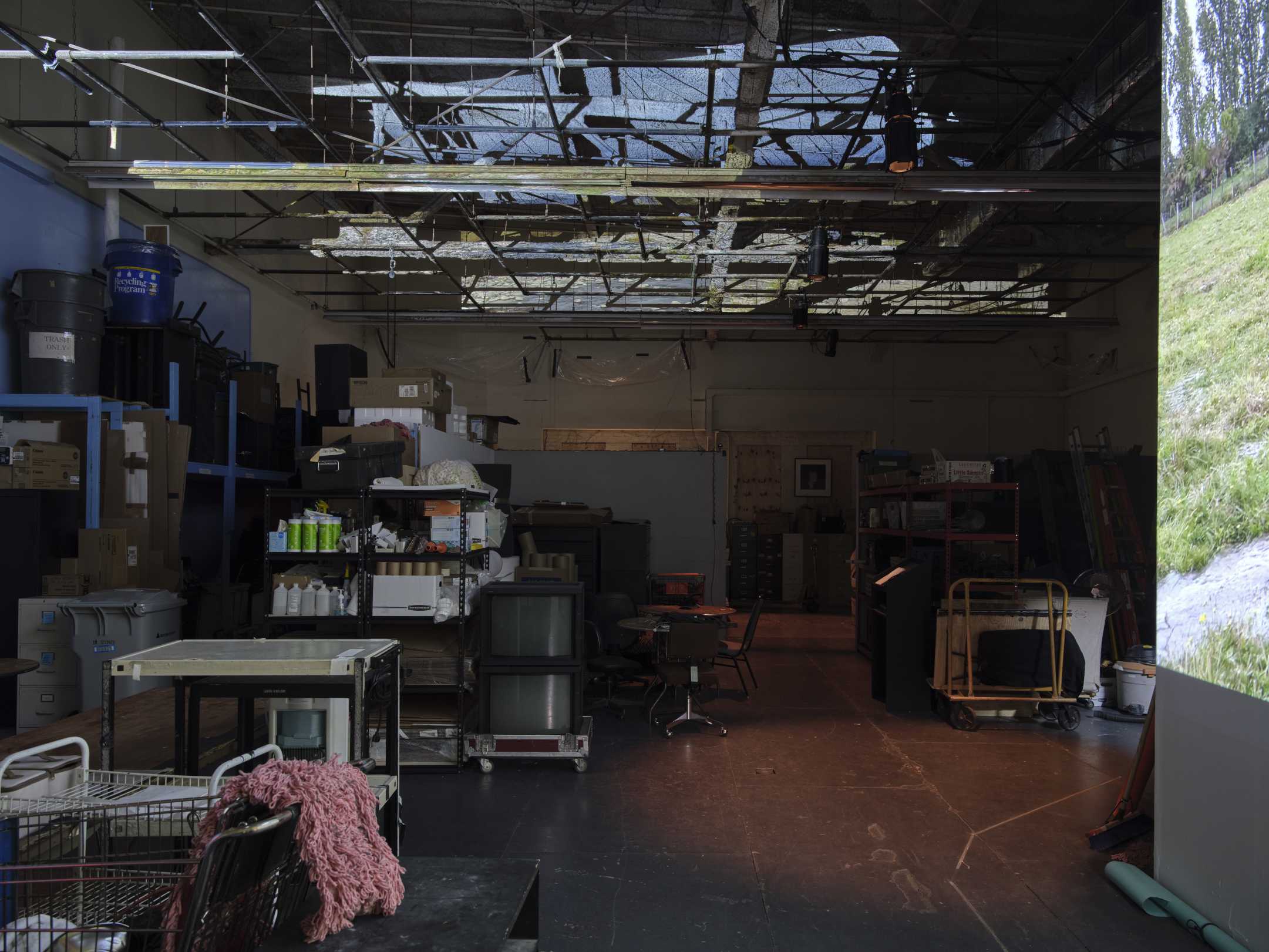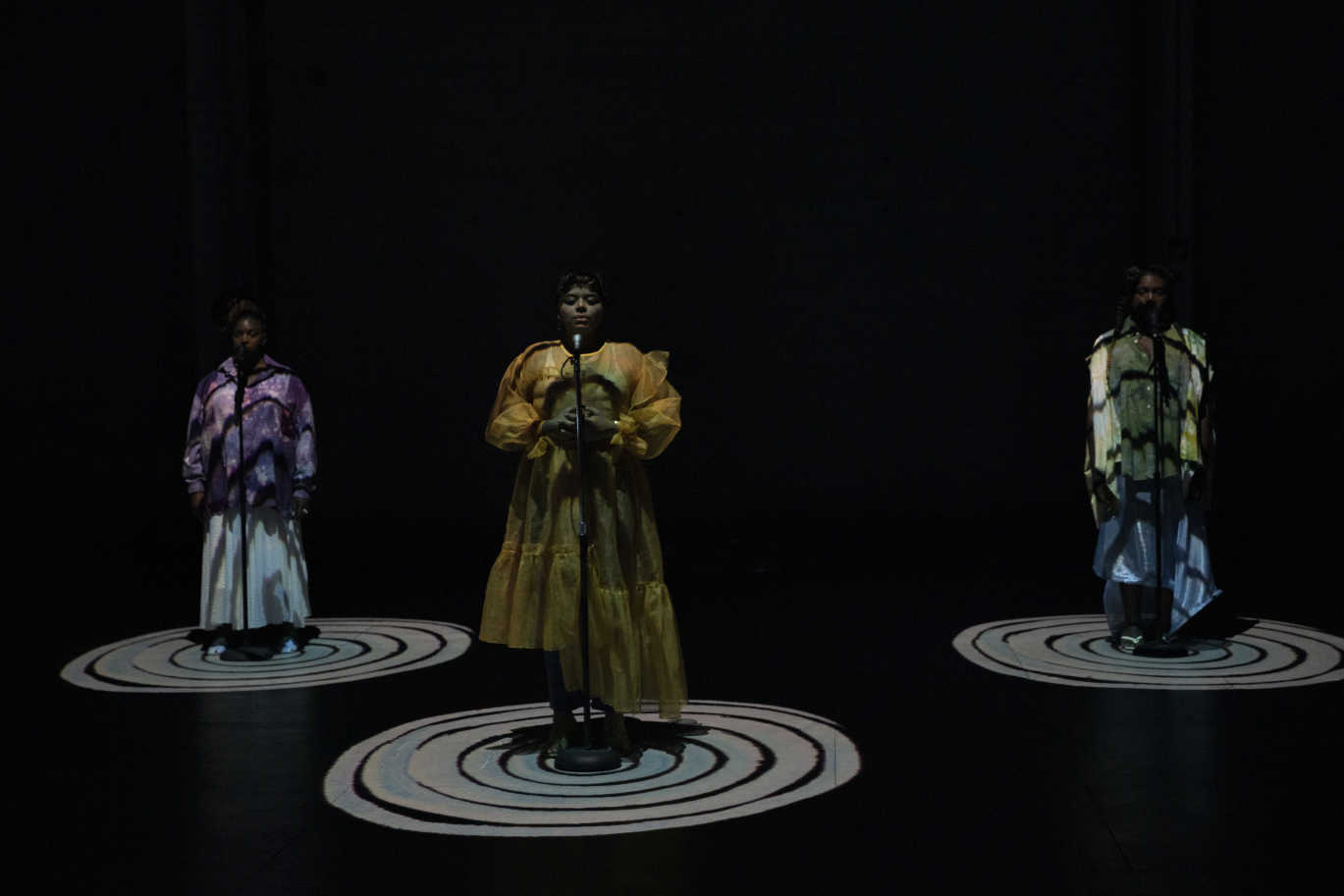
Credits:
Lauren Cronk, Manager, Individual Giving & Events
June 29, 2020
WE WALKED DOWN TENTH AVENUE in the early afternoon, sun overhead with no shade cover from trees or buildings. On many blocks you could see directly out to the Hudson. We may have stopped into a few commercial galleries along the way; I truly can’t recall. But when we reached 19th Street we headed straight for 512, into the lobby, then the elevator, and finally made it to the deliciously air-conditioned gallery. I remember the room being very open, not many dividing walls, with black floors and high black-box-like ceilings that clearly signaled we were not in a “normal” gallery.
That was summer 2010, and my first visit to The Kitchen. I was an intern at Exit Art, a nonprofit gallery and performance space then located on 10th Avenue at 36th Street where I had my first glimpse into what the art world looked like from inside a small non-profit art space. (Exit Art closed in 2012, forty years after its founding in 1982.) Tenth Avenue was a very different place ten years ago. The only things in the immediate vicinity of Exit Art were a BP gas station (the status of which a visitor to the opening of the exhibition Ecoaesthetic called into question, comically asking me if it was an artwork in the show) and a McDonalds (to which I ventured multiple times over the summer to purchase Happy Meals to feed to a colony of ants for an artwork by Elizabeth Demaray in the same exhibition). I was one of the few pedestrians on my walk to the gallery from Port Authority every day, exiting at the Ninth Avenue entrance so I only had a couple of hot, shadeless blocks to trek after taking the bus in from my parents’ house in New Jersey. That summer I spent my days working on an exhibition I had no idea would come to shape the next decade of my career in the art world.
DURING THE MONTHS OF MY INTERNSHIP, Exit Art’s curators were in the final months of research for Alternative Histories, an exhibition and subsequent book which sought to chronicle fifty years of alternative art spaces in New York City. As interns, my peers and I were each tasked with a few spaces to research. We spent hours scouring the internet and passed quiet days researching in various libraries and archives around the city. For weeks I sat in the Fales Library at NYU, clearly irritating the graduate student librarians who were required to pass me materials folder by folder so that I could review them and snap photos of ephemera I thought might be valuable to the exhibition. (I remember one instance when, after receiving a folder containing one solitary photo irrelevant to my research, I sat for a few quiet minutes before handing it back and requesting my next folder.) I was told by Exit Art’s curators to look for names such as “Trisha Brown,” “Robert Rauschenberg,” and “Alan Kaprow.” Anything with an exact date on it was gold—though these were hard to come by as most flyers and posters only carried the month and date, not the year. Photographs were important, but even more so were documents that communicated the atmosphere of the time and place, and that helped piece together how these artists were connected to one another through exhibitions and performances. Collage-style flyers, hand-written letters, and traces of early arts administration documents were my favorite objects to pore over. It was in those archives that I learned about Judson Church and the beginning of alternative, artist-run, nonprofit spaces in New York City, while sitting just a few buildings away from the historical locus of those activities.

But spending time in the archives looking at old photographs and flyers would only get us so far. This excursion to The Kitchen was one of a few intern outings that we took to help contextualize the world we were diligently inputting to a FileMaker database day after day. The exhibition we visited at The Kitchen that summer was The Absolutely Other , a group show of New York City-based artists whose works explored the idea of anonymity and proposed the possibility of finding community with strangers within a densely populated metropolis. I remember picking up the receiver of Nancy Hwang’s Meet me at home. (2006) and chatting directly with the artist to coordinate a visit to her home (my 19-year-old self politely passed on her offer), and lying in the same artist’s Opus (2010), a bed with a life-size video projection on the ceiling above. This exhibition—which also included Einat Amir’s Phase Three (2009–2010), Daniel Bozhkov’s Condensed Instructions for Mutiny (2010), eteam’s Landcruise (2009–2010), Hope Hilton’s When I am reading I am far away (2010), and Dave McKenzie’s It’s a Date (2004)—was one of my first experiences with interactive art and relational aesthetics. My encounter with this show emphasized the notion that had been growing in my mind all summer: that art is truly all around us. These ideas, likely somewhat unconsciously, would make their way back with me to California, where I returned in the fall to continue pursuing a degree in Studio Art.

ALMOST EXACTLY TEN YEARS LATER, my job at The Kitchen continues to shape my understanding of how art is present in all facets of our daily life, and how alternative art spaces are key players in introducing the public to ideas like this. My research for Alternative Histories, my daily tasks and interactions in the Exit Art office, and my encounter with The Absolutely Other at The Kitchen brought to life an intricate web my mind had been weaving all summer. It was then that I began to realize the ever-important role of the alternative art space in influencing our understanding of what art can be beyond the walls of a traditional gallery or museum. Especially now while working remotely, as we find ourselves isolated from the structure and activities of The Kitchen’s gallery and theater, I seek to find the art that exists around me daily, remembering how these experiences changed the way I see art, and how I see the world.

